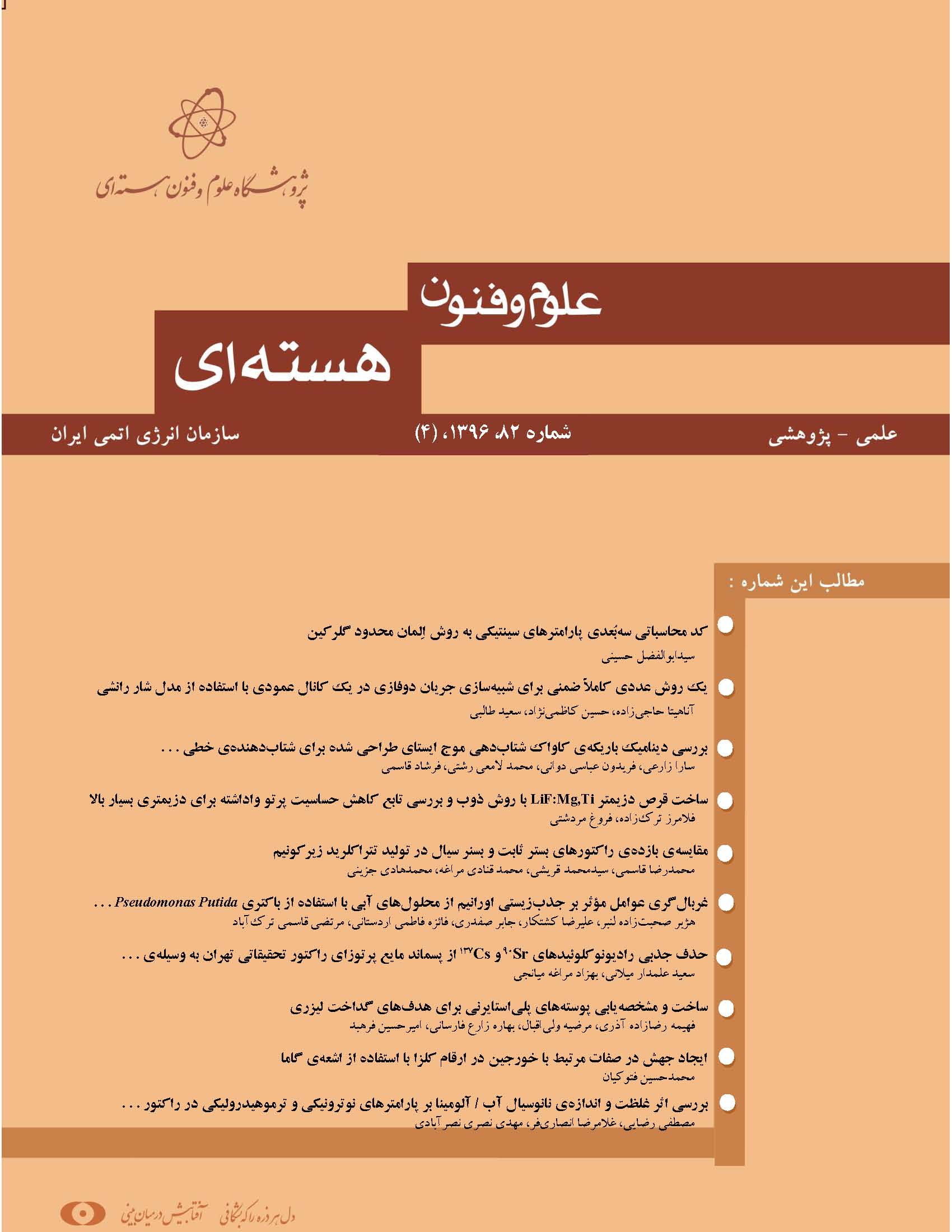نوع مقاله : مقاله پژوهشی
نویسندگان
1 پژوهشکدهی فیزیک و شتابگرها، پژوهشگاه علوم و فنون هستهای، سازمان انرژی اتمی ایران
2 گروه کاربرد پرتوها، دانشکدهی مهندسی هستهای، دانشگاه شهید بهشتی
چکیده
کاواکهای شتابدهی موج ایستای جفتشدهی جانبی به علت گرادیان شتابدهی نسبتاً بالا و حساسیت نسبتاً کم نسبت به خطای ساخت، در شتابدهندههای خطی الکترون با انرژی پایین کاربرد گستردهای دارند. مهمترین گزینه در طراحی کاواکهای شتابدهی، برهمکنش مؤثر ذره و میدانهای الکترومغناطیسی برای رساندن خوشههای الکترون به انرژی مورد نظر با بیشترین راندمان و کیفیت مناسب باریکهی خروجی است. بررسی دینامیک باریکه برای تعیین مشخصات باریکهی خروجی از کاواک ضروری است. در این مقاله با استفاده از کد استرا، دینامیک باریکهی کاواک شتابدهی MeV 6 بررسی شده است. کاواک مورد نظر به منظور تشدید در مد عملکردی 2/π با فرکانس MHz 2998.5 طراحی شده است که با لامپ مگنترون با بیشینه توان MW 2.3 تغذیه میشود. نتایج به دست آمده نشان میدهد که پس از ساخت کاواک طراحی شده، برای باریکهی خروجی، گسیلندگی در جهت افقی و عمودی، نیمرخ عرضی در جهت عمودی و افقی، و گستردگی انرژی به ترتیب مقادیر mm 1.25، pi-mm-mrad 4.18 و MeV 0.84 مورد انتظار است.
کلیدواژهها
عنوان مقاله [English]
Beam Dynamic Study of a Designed Accelerating Cavity for 6 MeV Linac
نویسندگان [English]
- S Zarei 1
- M Lamehi Rachti 1
- F Ghasemi 1
- F Abbasi Davani 2
چکیده [English]
Side coupled standing wave accelerating cavities are widely used in a low energy linear accelerator because of relatively high accelerating gradient and low sensitivity to construction tolerances. The effective interaction of particles and electromagnetic fields is important to accelerate electrons to the intended energy with the greatest efficiency and beam quality output. Beam dynamics study is essential for determining the coordinates of the output beam from the cavity. In this paper, we present the beam dynamics of a 6 MeV accelerating cavity using a space charge tracking algorithm (ASTRA). The designed accelerating cavity that feeds by magnetron with a maximum power of 3.2 MW is operating in π/2 mode at a frequency of 2856 MHz. The results show that after the construction of the designed cavity, the vertical and horizontal emittances of the output beam, the transverse profile and the beam energy spread respectively 3.55 pi-mm-mrad, 1 mm and 0.88 MeV as expected.
کلیدواژهها [English]
- Beam Dynamics
- Standing-Wave Accelerating Cavity
- ASTRA
- Electromagnetic Field and Electron Interaction

